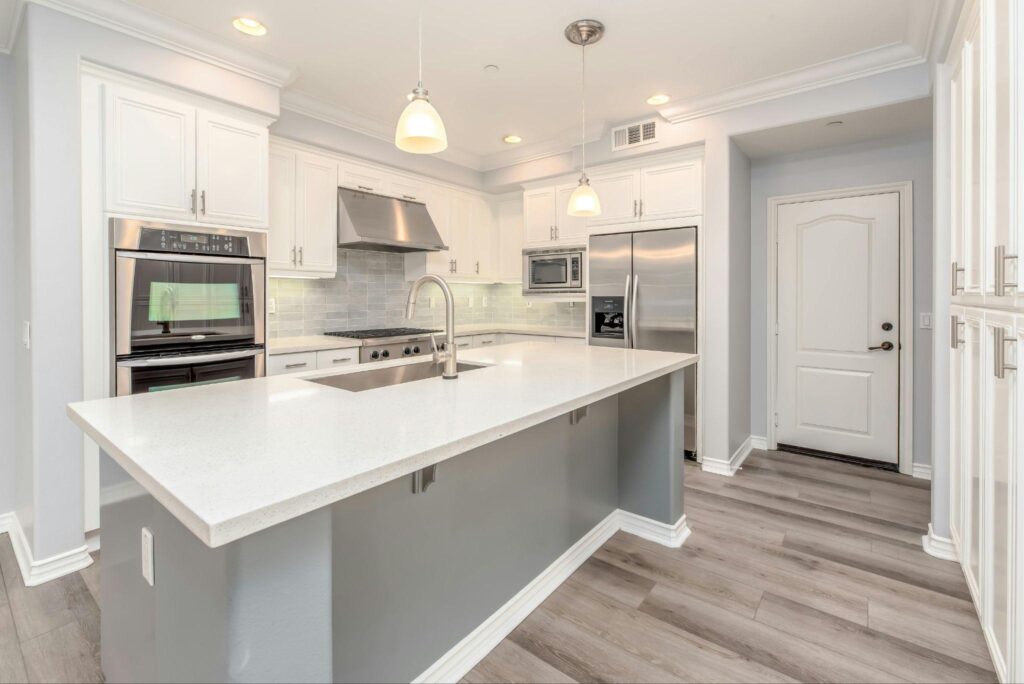
Image: Freepik
Some people call it a “midlife crisis.” Others see it for what it really is — a midlife awakening. When you move in midlife, you aren’t just changing your zip code — you’re rewriting the map of your life. Whether you’re chasing sunlight, space, or a simpler routine, relocation can reset your rhythm, reignite your ambition, and restore your sense of possibility.
Summary
A midlife move can revitalize your career, health, and personal goals — but it’s not just about buying a new home. It’s about choosing an environment that aligns with who you’re becoming. Consider financial fit, neighborhood character, lifestyle flow, and future flexibility.
Why Midlife Moves Hit Different
By your forties or fifties, you know what drains you — and what fuels you. Relocating now isn’t escape; it’s calibration.
- Career Clarity: You may be ready for a pivot, not a pause. Many professionals discover that a new city sparks entrepreneurial energy.
- Lifestyle Upgrade: You might crave walkability, outdoor life, or creative community — not another commute.
- Emotional Reset: A new setting can break old narratives and open new ones.
- Legacy Thinking: You’re planning for meaning, not milestones.
How to Plan Your Midlife Relocation
- Define your “why.” Are you seeking peace, progress, or purpose?
- List non-negotiables. Proximity to family? Warm climate? Career opportunities?
- Audit your finances. Include moving costs, property taxes, and long-term affordability.
- Research healthcare and community support. Crucial for longevity and lifestyle continuity.
- Test-drive neighborhoods. Stay for a week — notice how you feel in daily rhythm.
- Map your future activities. Find where your passions fit — hiking trails, volunteering, coworking spaces.
- Plan your soft landing. Line up local contacts or online groups before the move.
Choosing a Home That Fits Your Next Chapter
A beautiful house isn’t enough — it must match how you’ll live now.
| Goal | What to Look For | Real Estate Tip |
| Simplify life | Smaller footprint, low-maintenance design | Prioritize efficiency over size |
| Build community | Shared amenities, walkable districts | Seek mixed-use developments |
| Flex for change | Convertible office/guest room | Think resale and adaptability |
| Healthy routine | Near trails, parks, gyms | Verify neighborhood walk scores |
| Financial freedom | Reasonable taxes, energy efficiency | Use total cost-of-living calculators |
Working with an Expert Realtor
If you’re exploring a move to Central Florida — where sunshine meets opportunity — Top Orlando Realty helps midlife movers find homes aligned with their next-phase ambitions. From the creative pulse of downtown to the lakeside calm of Winter Park, their team understands how lifestyle goals translate into real estate choices. Whether you’re craving career proximity, suburban comfort, or easy access to recreation, their personalized approach makes your transition seamless — and exciting.
Expanding Skills for a New Direction
Sometimes, relocation is the first move — education is the next. Going back to school midlife isn’t about starting over; it’s about leveling up. From leadership programs to digital credentials, online learning has made reinvention flexible.
If you’re already a nurse seeking to advance your career and improve patient outcomes, earning an online RN to BSN degree can open new doors while fitting around your work schedule. Check this out if you’re looking for an online program that lets you balance studies, family, and professional life with surprising ease.
Making the Most of Your Fresh Start
- Phase 1 — Preparation: Journal your motivations, run financial scenarios, and declutter emotionally and physically.
- Phase 2 — Exploration: Spend a few weeks scouting; talk to locals and compare lifestyles.
- Phase 3 — Transition: Hire reliable movers, notify utilities early, update licenses and medical providers.
- Phase 4 — Integration: Join community clubs, take local classes, build your new “support map.”
- Phase 5 — Evolution: Revisit goals every six months — your new environment should keep serving your growth.
Product Spotlight: MoveAdvisor
When you’re uprooting your life, chaos sneaks in fast. MoveAdvisor simplifies the entire moving process — from timeline planning to inventory tracking — so you can focus on what matters: your fresh start.
This free app creates a personalized moving checklist, recommends local movers, and helps you map every room in your home digitally before a single box gets packed. It’s intuitive, visual, and built for real people — not warehouses.
Common Questions About Moving Midlife
Q1: Isn’t it too risky to relocate after 45?
Not if planned strategically. With financial foresight and clear intent, relocation can increase stability and fulfillment.
Q2: How do I know if a neighborhood fits my vibe?
Use lifestyle-matching tools like Niche.com’s local guides and walk the area at different times of day.
Q3: How long does it take to feel “settled”?
Most people report 6–12 months. Joining community events accelerates belonging.
A midlife move isn’t running away — it’s running toward alignment. By choosing an environment that mirrors your evolving priorities, you design not just a new address but a new life rhythm. Every move holds a message: You’re not done yet.









